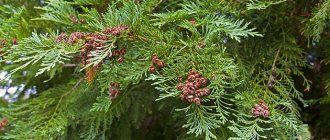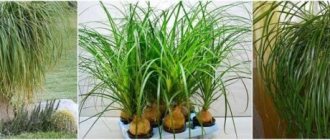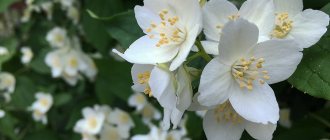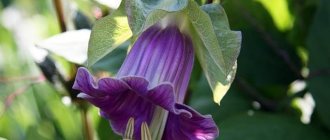Author: Elena N. https://floristics.info/ru/index.php?option=com_contact&view=contact&id=19 Category: Garden plants Published: February 12, 2019Last edits: January 20, 2021
- When to plant
- Rules of care
- Lupine angustifolia, or blue
Did you know that lupine is not only a beautiful, but also a very useful plant? Lupine oil is not inferior in quality to olive oil, but does not contain substances that slow down digestion. Lupine is both an ornamental, green manure and medicinal crop. The root system of this plant is capable of accumulating and converting nitrogen into a form that is easier for plants to absorb. Lupine cultivation began about four thousand years ago.
If you are interested in this culture, then from our article you will learn:
- When and how to sow lupine;
- How to care for decorative lupine;
- What types and varieties of lupine are most often grown in cultivation?
Planting and caring for lupine
- Planting: sowing seeds for seedlings - in early March, planting seedlings in the ground - at the stage of development of 2-3 leaves. Sowing seeds directly into the ground - before winter or in April.
- Flowering: within three weeks from late May or early June.
- Lighting: bright sunlight.
- Soil: any soil, but preferably loamy with a reaction ranging from slightly alkaline to slightly acidic.
- Watering: abundant in spring, moderate the rest of the time.
- Feeding: from the spring of the second year, once a season with mineral complexes that do not contain nitrogen.
- Reproduction: seed.
- Pests: aphids, germ fly larvae, root nodule weevils.
- Diseases: root and gray rot, Fusarium wilt, Phomopsis, rust, spotting, viral mosaic.
Read more about growing lupine below.
Lupine (lat. Lupinus) is a genus of the Legume family, which is represented by both annual and perennial herbaceous plants, shrubs, subshrubs and subshrubs. Translated from Latin, “Lupus” means “wolf”, and the plant itself is sometimes popularly called “wolf bean”. Lupine flowers are widespread in nature in two regions: in the Mediterranean-African region there are 11 annual and 1 perennial species of lupine, and in the Western Hemisphere, from Patagonia to Alaska and from the Atlantic to the Pacific Ocean, about 200 species of lupine grow. Among the American species, the only cultivated species are the variable lupine, which was cultivated by the Incas, and the many-leaved lupine.
The lupine plant is drought-resistant, so some of its species grow in the deserts of Arizona, California, Texas, Peru and Chile, and even in the Sahara. In 1911, the English breeder George Russell created highly decorative species of lupins, which were called “Russell hybrids” and have since been a popular decoration for gardens and flower beds.
- Petunia shoots have appeared - 6 actions that will protect seedlings from disease and death
Botanical description
The root system of lupins is taprooted, sometimes going 2 meters deep. The roots are covered with small swellings that absorb nitrogen from the air and enrich the soil under the plant with it. The stems are woody or herbaceous, the branches are creeping, protruding or erect. Lupine leaves are alternate, on long petioles, palmately compound, connected to the stem by a leaf cushion with a long stipule. An inflorescence is an apical raceme on which a large number of flowers are arranged whorled, semi-whorled or alternate. The size of the brush in some species reaches one meter, the color of the flowers is varied - yellow, white, red, pink, cream and purple lupins, as well as all shades of purple.
Lupine seeds of different species differ in shape, size, and color. Lupine beans of Mediterranean species are larger than American ones. When drying, the beans crack and scatter seeds around them - very small grains of lupine. Lupine not only decorates flower beds, it is also grown as green manure: lupine stems and leaves rotted in the ground become an excellent fertilizer. In addition, fodder lupine is grown.
Bloom
In the middle zone, lupins bloom from June to July. With large amounts of rainfall, plants can produce new inflorescences until frost. The flowers are pollinated by insects in good weather, and self-pollinate in cloudy weather.
The seeds ripen in August. The fruit type of lupine is bean. After ripening, the fruits open and the seeds scatter in different directions. So, as a result of self-seeding , new plants appear in abundance. If you want to avoid self-seeding, you need to cut off the inflorescences before the seeds ripen.
Growing lupine from seeds
Sowing seeds
Lupine seeds are sown for seedlings in a loose soil mixture for seed germination, consisting of peat (one part), turf soil (one part) and sand (half part). Before sowing, the seeds are mixed with crushed root nodules of old lupins to accelerate the growth of nitrogen-absorbing bacteria. Shoots will appear in a week or two, and if you want all the seeds to germinate at the same time, you need to cover the crops with damp gauze and keep them warm.
Growing seedlings
It should be recalled that seed propagation does not guarantee that young lupins will inherit the color and other characteristics of the mother plants. Lupine is usually grown from seeds for the purpose of breeding experiments. Purple and pink colors are dominant, so they can be preserved in the next generation, but the white color will most likely be lost during seed propagation. After 2-3 true leaves appear, the seedlings are planted in a permanent place - do not delay replanting, since the tap root system will become a significant hindrance to you.
5.Use as green manure
It is advisable to use some types of lupine as green manure. This is due to the fact that the flower grows quickly with minimal care and easily restores even soil that is quite poor in nutrients - it enriches it with nitrogen, and some species with phosphorus (for example, multileaf lupine). Among other things, powerful growth can retard the development of weeds on the site.
It is worth remembering that shoots from bushes should be cut off before the formation of inflorescences or immediately after the flowers wither - otherwise the plants will form abundant self-seeding and it will not be easy to get rid of them.
The deep-lying root system of the flower is also used to secure the soil from sliding - lupine is planted on the edge of ravines and steep slopes.
↑ Up,
Planting lupine
When to plant
If you use the seed propagation method, sow the seeds in early spring, at the beginning of March. If you decide to sow directly into the ground in the spring, then sowing lupine is carried out in April, after the snow has melted, but the site must be ready in the fall. Many gardeners prefer to sow lupine before winter, at the end of October. There are many advantages in autumn sowing and almost no contraindications: the seeds will not have time to germinate before winter, since they will ripen in the ground in very comfortable conditions. The seeds are planted in the soil to a depth of 2 cm, then the area is mulched with peat, in the spring the lupine will sprout and bloom by August.
If you grow lupine using seedlings, then, as already mentioned, planting of lupine is carried out when the seedlings have 2-3 leaves, and do not delay so that there are no problems with replanting.
- Planting crocuses
How to plant
Slightly acidic or slightly alkaline loamy or sandy loam soil in a sunny area is most suitable for lupins. To prepare the site for the spring planting of lupine seedlings, in the fall the acidic soil is limed with dolomite or lime flour at the rate of 5 kg per 1 m², and this will be enough for 3-4 years. Too alkaline soil is dug up with peat with the same calculation - 5 kg per 1 m². In the spring, sprouted and strengthened seedlings are planted in soil prepared in the fall at a distance of 30-50 cm from each other.
Lupine care
Rules of care
Caring for lupine is not difficult. If you grow perennial lupine, during the first year you will have to periodically loosen the soil in the area and remove emerging weeds. Over time, adult plants will need to be earthed up, since their root collar is gradually exposed, and the lateral rosettes become isolated. After five to six years of growth, the old bushes will have to be removed, since the middle part of the bush dies off and the quality of flowering noticeably deteriorates. Take care of supports for tall lupins so that their stems do not break from the wind.
If you want lupins to bloom until the cold weather, trim off faded inflorescences without allowing them to dry out. After such manipulation, perennial species are able to bloom twice per season. Lupines need to be watered moderately, but in spring watering should be plentiful.
Fertilizer
Lupines are fed in the spring, in the second year of growth, with mineral fertilizers that do not contain nitrogen: approximately 20 g of superphosphate and 5 g of calcium chloride are added per 1 m² of area. Fertilizing is carried out every spring until it is time to plant new lupins.
Pests and diseases
During the budding period, lupine can be affected by aphids, and at a later time - by the larvae of the sprout fly and root nodule weevils. They will have to be combated by spraying plants with insecticides.
Among the diseases that are dangerous for lupine are rot (gray and root rot), Fusarium wilt, spotting and mosaics, Phomopsis and rust. You won’t have to fight diseases and pests if you follow the agrotechnical requirements for lupine, and first of all, the rules of crop rotation: lupine can be re-placed on the site only after three years. The best precursor for lupine is cereals.
7.Use in landscape design
Depending on the height of adult plants, the use of lupins on the site will vary. If tall varieties should be planted in the center of flower beds and flower beds to create a bright accent, then small varieties will look better closer to garden paths. In the center of a floral arrangement, such plants will simply get lost. Information about the final growth of the flower can usually be found on the seed packet.
Some types will look appropriate on alpine slides, while others will help to shade and decorate the walls of buildings or garden gazebos.
Often, lupine inflorescences are cut off and left indoors in a vase with water. The cutting of such flower stalks is carried out in the morning or evening hours, the lower cut is made at an acute angle. It would be optimal to cut off shoots that have about a third of their buds open - the rest of the flowers will already be blooming in the room.
↑ Up,
Types and varieties
Let us present to you several of the most famous types of lupins in nature.
Lupine angustifolia, or blue
A herbaceous plant with a height of 80 cm to 150 cm with a sparsely pubescent erect stem. The leaves are palmately divided, also pubescent below. The flowers are odorless, white, pink or purple, which for some reason was considered blue, which is why the species was called “blue lupine”;
Lupine multileaf
Originates from Northwest North America. It is winter-hardy, so it grows well in our latitudes. The height is from 80 cm to 120 cm, the stems are straight and almost bare, the leaf of multileaf lupine is palmate, on a long petiole, pubescent below. The inflorescences are 30-35 cm long and consist of many blue flowers. It blooms for about three weeks in June; if the conditions for timely removal of faded inflorescences are met, it blooms again at the end of summer.
Lupine yellow
An annual plant with a sparsely leafy, pubescent stem and similarly pubescent leaves on long petioles, consisting of 5-9 lobes. Yellow flowers with a mignonette-like aroma are collected in a whorled raceme;
Lupine white
Grows up to 150 cm in height. Its stem is erect, branched at the top. The leaves are palmate, densely pubescent underneath in such a way that the villi form a silvery rim around the leaves. The upper side of the leaves is smooth. The flowers are odorless, white, pale pink or light blue, arranged in an inflorescence in a spiral.
In addition to these species, the following also attract attention: variable lupine, perennial lupine, small-leaved lupine, dwarf lupine, Nootka lupine, tree lupine and others.
Hybrid varieties of multileaf lupine are most often grown in culture, such as:
- Princess Juliana - up to 110 cm tall, white-pink flowers collected in racemes up to 40 cm long, blooms for up to 40 days from June;
- Apricot - up to 90 cm high, orange flowers, inflorescences up to 40 cm long, blooms from mid-June for 30-35 days.
But the most beautiful and favorite varieties among flower growers were developed by the breeder Russell: “Burg Fraulin” - with a pure white color, Main Schloss - with a red-brick tint, a series of low-growing bright hybrids Minaret or Splendid - a variety group of monochromatic hybrids and varieties with a sail of white or contrasting color.











